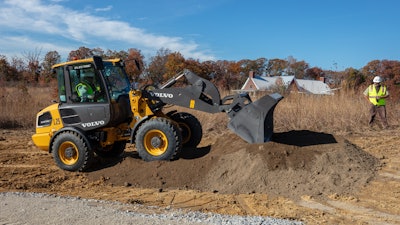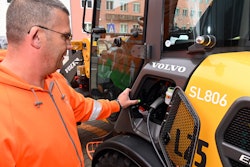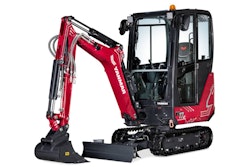
Located just 20 miles outside the U.S. capital, the Occoquan Bay National Wildlife Refuge offers a sanctuary to wildlife and a place for people to explore nature. Construction of an ADA-accessible trail will support the conservation mission of the U.S. Fish and Wildlife Service, which manages the National Wildlife Refuge System — a network of 567 refuges across the U.S. that offer access to a host of popular activities while providing vital habitat for thousands of wildlife species.
To minimize disturbance and the carbon footprint of the project, the battery-powered, zero-emission ECR25 Electric compact excavator and L25 Electric compact wheel loader from Volvo Construction Equipment (Volvo CE) are being used on the project. They represent the first pieces of electric heavy equipment to be used on a project by a federal agency.
This pilot will help the U.S. Fish and Wildlife Service explore ways to minimize its carbon footprint in natural areas and reduce the emissions produced while maintaining public lands. It also provides Volvo CE valuable feedback on electric equipment performance.
“We are excited to partner with the U.S. Fish and Wildlife Service on this project to demonstrate Volvo’s commitment to lowering emissions and working to build the future we all want and need,” said Ray Gallant, vice president of Product Management and Productivity, Volvo CE.
Designed for Minimal Disturbance
Work on the trail began November 8 and was expected to take approximately two weeks. It is being completed by a Service Maintenance Action Team that pulls skilled trade employees from various refuges for a short period.
The L25 Electric compact wheel loader is being used to haul and lay down gravel for a wheelchair-accessible half-mile trail around a pond and to clear brush. The ECR25 Electric compact excavator is digging trenches to improve drainage from the pond and helping to build a viewing platform over the pond.
The electric machines produce zero emissions and have significantly lower noise levels than diesel machines. These qualities are especially beneficial when working in a natural area like the refuge, which is home to a diverse array of grasslands, wetlands and woods that attract red foxes, painted turtles, osprey, river otters and countless other species.
 The ECR25 Electric compact excavator is digging trenches to improve drainage from the pond and helping to build a viewing platform over the pond.Volvo Construction Equipment
The ECR25 Electric compact excavator is digging trenches to improve drainage from the pond and helping to build a viewing platform over the pond.Volvo Construction Equipment
Projects like this one give a glimpse into how electric machines can create a more climate-friendly future for the construction industry. The project supports the Biden-Harris administration’s America the Beautiful initiative to pursue a locally led, and voluntary, nationwide effort to conserve, connect and restore the lands, waters and wildlife upon which we all depend.
The ECR25 and L25 Electric machines will be commercially available in the U.S. in early 2022.



















